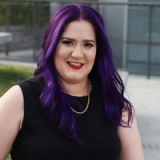Companies with a dedicated, well-defined sales process experience 18% more revenue growth than those without. Understanding how customers move through your sales cycle makes it much easier to spot where your strategy falls short. You’ll know if a prospect is hitting all of the expected marks on the way to closing a sale or is missing your defined targets and expectations if you have something to benchmark against.
That said, without much analysis of the successes and opportunities within their sales cycles, most modern sales teams focus on the first parts of the sales cycle: researching, qualifying, and prospecting. The thinking is that if you nail these first few, you’ll have tons of interested customers coming through your door for your sales team to work with.
That’s true, but if you spend effort and resources perfecting the end of your sales cycle, you may end up creating an even more robust pipeline for your team to work with. It’s beneficial to spend time and energy focusing on all parts of your cycle, not just those that start the process off.
For more strategies on optimizing your sales process, check out our guide on how to shorten the sales cycle.
We’re putting the cart before the horse, though. Let’s talk more about what a defined sales cycle looks like, what the different sales stages are, and some tips for effective sales cycle management.
Prospecting
Sales prospecting is the process by which salespeople (or, in some cases, marketing teams) work to identify potential leads for potential customers. There are many ways to find new customers, and the process that works best will depend highly on your industry, your ideal customer profile, and the products or services you sell.
Some sales reps find that scraping Linkedin to create lists of people in their target market and using a program like Hunter.io to get email addresses for outreach is an effective way to prospect. For others, buying or renting lists is a solid strategy.
For sales professionals who are charged with large, complex deals, a little more research may be needed to zero in on the right buyers. For example, if you sell food service to college campuses in a certain territory, researching those who might fit the criteria may just be a matter of pulling lists of accredited schools and looking up contact information for the facilities and operations teams.
If you’re selling to companies on the Fortune 500 or Fortune 100 list, your prospects may be predetermined, but you’ll need to do some searching to determine who is the right contact person and who will be on the buying team.
When it comes to prospecting and lead generation, don’t discount the power of referrals for new leads. Word of mouth is a popular marketing channel, and many b2b customers look to their peers for recommendations for technology and service providers. So, as part of your prospecting process, make it a point to ask current customers for referrals to others your business may be able to help.
It’s important to remember that prospecting is a numbers game. Look at your average close rate. If you’re currently closing 40% of deals and you need to close 100 deals this year, you want to aim to be putting 250 qualified leads into your pipeline. We’ll look next at how to qualify leads, but it’s important to understand the volume of potential customers you’re looking for relative to your conversion rate.
Research
Now that you have your list of prospects, it’s time to do some research to zero in on who on your list is a qualified lead. You can learn a lot about your potential clients with some good internet research skills. Start by looking at company websites, LinkedIn, and local news organizations like the business journal or equivalent.
Your research should be focused on assessing your prospect’s needs and how well they align with what you’re selling - this is how you know you have a quality lead. At this stage, you may also be tasked with finding the initial contact in the organization who can help you navigate as you work through your sale and connect you with all of the decision-makers.
What does this look like? If you sell CRM software designed for law firms, you might be researching law firms with 70-100 partners and looking for the sales or marketing leader who oversees the CRM for the firm.
You can also use Linkedin to learn who some of the other leaders and decision-makers you might need to interact with to get your deal done. You see that the CFO is an alum of your university, and note this so you can bring it up if you meet her. In your research, you may even find out which CRM system the firm is currently using. If you don’t have that information from your research, we’ll cover how to ask about this later in the process.
Outreach
You’ve done your research and are ready to start contacting qualified leads. Your first contact should be an introduction and a request to get to know your prospective customer better. You don’t want to jump into your sales pitch right away, as you don’t know your customer’s needs and you haven’t been able to build trust just yet.
Some companies have reps who specialize in cold calling and/or cold emailing to provide outreach to prospective companies. These organizations’ workflows generally involve looking for a response to these messages in an attempt to book a meeting or product demo.
If your outreach does lead to an initial meeting, you want to spend the time trying to understand their current solution (or lack thereof) and any pain points. You can also start to learn about their budget and timeframe for implementing a new solution. This type of discovery call is the first step in building trust and a relationship with your prospect.
You may need to meet with a prospect a few times before moving on to the next stage of the sales cycle and delivering a formal sales proposal and presentation.
How you do initial outreach and how many meetings or phone calls you will need will vary widely depending on where your prospects are in the sales cycle and the product or services you sell.
If you feel strongly that you’ve got a strong lead and can make a case for implementing your solution in their organization, you may need to be a little more persistent and follow up a few times before you get an initial conversation. If you’re struggling with whether to keep pushing or give up, chat with your sales leader or a trusted colleague to get their advice.
Presentation
You’ve got a good understanding of your prospect’s organization, pain points, and key decision-makers, and you’ve built enough trust that you’ve been asked to do a formal presentation. This is a pivotal moment in your sales cycle, but with some planning and great tools at your disposal, you’re going to knock your prospect’s socks off.
With more distributed buying teams and hybrid work remaining the norm, the first step in preparing for your presentation should be determining how you will be presenting. Will you be in person or do your presentation over Zoom or another video conferencing platform? This key detail will help you structure the content and flow of your sales presentation so that you are set up for success.
Next, think about who you’ll be presenting to and what they need to hear to be able to say yes. Is there specific functionality you need to demonstrate? Does someone on the buying team care about the onboarding process? Make a list of all of the key points you need to make to get the team engaged and work from there.
Whether you’re in person or virtual, it’s a good idea to have a few slides with some visuals to guide the conversation. A few slides that are really important are the one that sets up the agenda for the call and the one that outlines the next steps for everyone in the meeting. You don’t want to wrap up your presentation before aligning on the next steps.
When designing your presentation and talk track, Gartner advises remembering the power of threes. They say, “The vast majority of people can’t remember more than three things at a time. Good sales presentations should convey information around no more than three central ideas, and each individual slide should contain no more than three pieces of information that you want the buyer to understand.”
Negotiating and handling objections
Once you’ve delivered an outstanding presentation, and a formal, written proposal to go with it, the real work begins. Your prospective customers are reviewing the details of your offer and starting to evaluate it. Proposals aren’t always accepted as-is, even if you’ve done your research and put forth a compelling offer for your prospective client. The buying team will likely want to negotiate or may share some objections to the proposed deal.
Having the ability to overcome objections will help you keep your prospect in the sales cycle. While you can’t predict the objections you’ll hear, you can proactively brainstorm solutions to common objections that come up repeatedly. You might want to create some templates with information to help you refute the most common objections. These can be customized and sent to prospects as they raise their objections.
In addition to overcoming objections, its important that you keep your negotiation skills sharp if you want to close deals. Learning how to keep your cool in an emotionally charged conversation during sales negotiations is an important part of working in sales. While a solid sales strategy is to practice negotiations in lower-stakes environments, the more you negotiate with real prospects the better and more comfortable you’ll get.
For example, you’re selling office coffee subscriptions, and you’ve delivered an incredible presentation about the product mix you’ll offer to stock your prospective client’s breakroom. The client loves your presentation...but they’re not quite ready to sign on the dotted line and start forking over the cash.
After some deliberation, they come back and say that they think your product is too expensive, and they’re worried that their employees may not enjoy the flavor offerings you have. So what do you do now? You show them how compared to industry average costs, using your product mix, the company will save time and money. And to overcome the objection on taste? You offer to bring in some sample products for employees to taste test, so you’re only stocking the things they like best.
Closing the deal
After you and your prospective client have finished negotiations and you’ve overcome any objections that have come up in the process, it’s time to close the deal! Closing isn’t done when the prospective customer says yes; that’s when closing starts. Now it’s time to get the contract signed and start planning for any onboarding and implementation tasks that your team will need to complete to ensure a smooth start and a lasting customer relationship.
In the negotiation phase of the sales cycle, you should have taken care of all of the terms and conditions so that your customer knows exactly what they’ll be agreeing to a close, but if not, now is the time to walk through any contracts, service agreements, or other terms your customer will be held do when using your product or service.
Let’s use our coffee example from the last phase. Now that you’ve aligned with them on the product mix and pricing, it’s time to draw up the final agreement and choose a date to install the needed equipment and first batch of products for the breakroom. You and your point of contact meet to review the contract and all of the pricing details. You pick a date that works for both sides for the installation and delivery.
Everyone signs the agreement, and you remind your contact to call or email you with any questions or concerns prior to installation. You then promise to follow up and ensure the delivery went smoothly, and the team is happy with their selections.
Follow-up
Ah, the follow-up. If you’ve ever been the prospect, you know those emails well. The ones that say things like “just following up” or “just checking in” or worse, circling back. If you’re cringing reading this, you’re in good company. No one likes these emails, and as salespeople, they’re not fun to send either. So let’s look at some better ways to follow up both throughout the sales cycle and after the deal is done.
Remember that while a follow-up message may be to used to gauge interest, move a deal along, or ensure customer satisfaction, the real reason we keep following up is to continue to build on the relationship.
So if you need to follow up and are curious about where things stand, go ahead and ask a question or share a resource. Depending on your sales cycle length or the length of your contract with a potential customer, you may have thousands of opportunities to follow up with one person over the life of the relationship (so don’t just follow up, continue a conversation).
A few ways to follow up that move things along and add value include:
- Be clear on why you’re following up. If you’re looking to gauge interest, consider saying so, especially with someone early in your sales pipeline. This could look like asking the question directly. You’d say something like, I know we’ve chatted a few times, and I sent over some follow up and case studies for you to review, but you haven’t responded. Are you really busy or just not interested in hearing more? Their answer (or lack thereof) will tell you what to do next.
- Add value to the conversation. This might look like sending an article or a thought leadership piece relevant to your prospect’s interest or an interesting conversation or post you saw on social media. Asking questions and understanding their thoughts can help you get to know them and their challenges, goals, and priorities.
- Use birthdays and anniversaries as opportunities for outreach. When you wish someone a happy birthday or acknowledge a work anniversary or promotion, it does give you another opportunity to be top of mind. If you have any of these details, add them to the notes in your CRM, or better yet, automate a task to reach out on these dates. Remember to keep things genuine, and don’t use these as an opportunity to pitch.
- Share proof points or case studies that can help overcome sales objections. These can be subtle but powerful if you know how to position them. If you know price is a sticking point for a prospective customer, consider sending along a case study that highlights another customer’s ROI.
Remember that follow-up doesn’t stop after you’ve closed the deal. In many organizations, the salesperson stays with their customer for life, checking in before contracts expire or periodically with opportunities to expand the relationship and sell additional products and services.
Final Thoughts
Moving prospective customers through a sales funnel and the appropriate sales cycle stages can be challenging but worth the effort. In b2b sales, having a repeatable sales process means that you not only have the ability to sell more efficiently but also that you can define and leverage KPIs and metrics to help you understand where you have opportunities to improve.
If you need to produce beautiful proposals, sales documents, and easy-to-sign contracts, Qwilr can help. Schedule a demo to see our product in action and how you can gain more time to focus on your prospects throughout the sales cycle.
About the author

Marissa Taffer|Founder & President of M. Taffer Consulting
Marissa Taffer is the Founder & President of M. Taffer Consulting. She brings over 15 years of sales and marketing experience across various industries to a broad range of clients.


